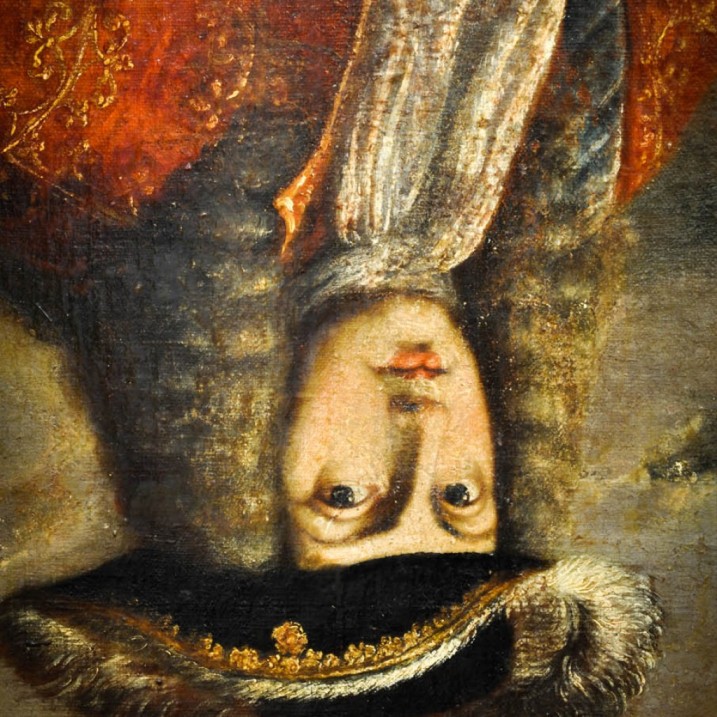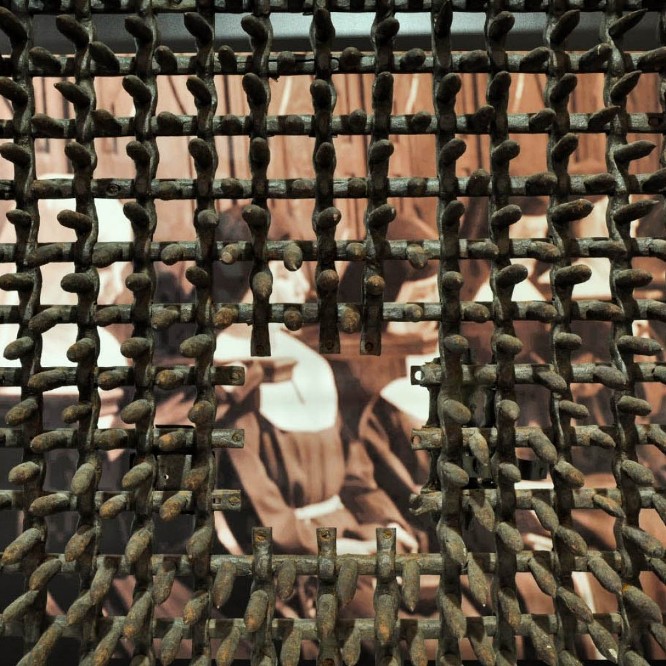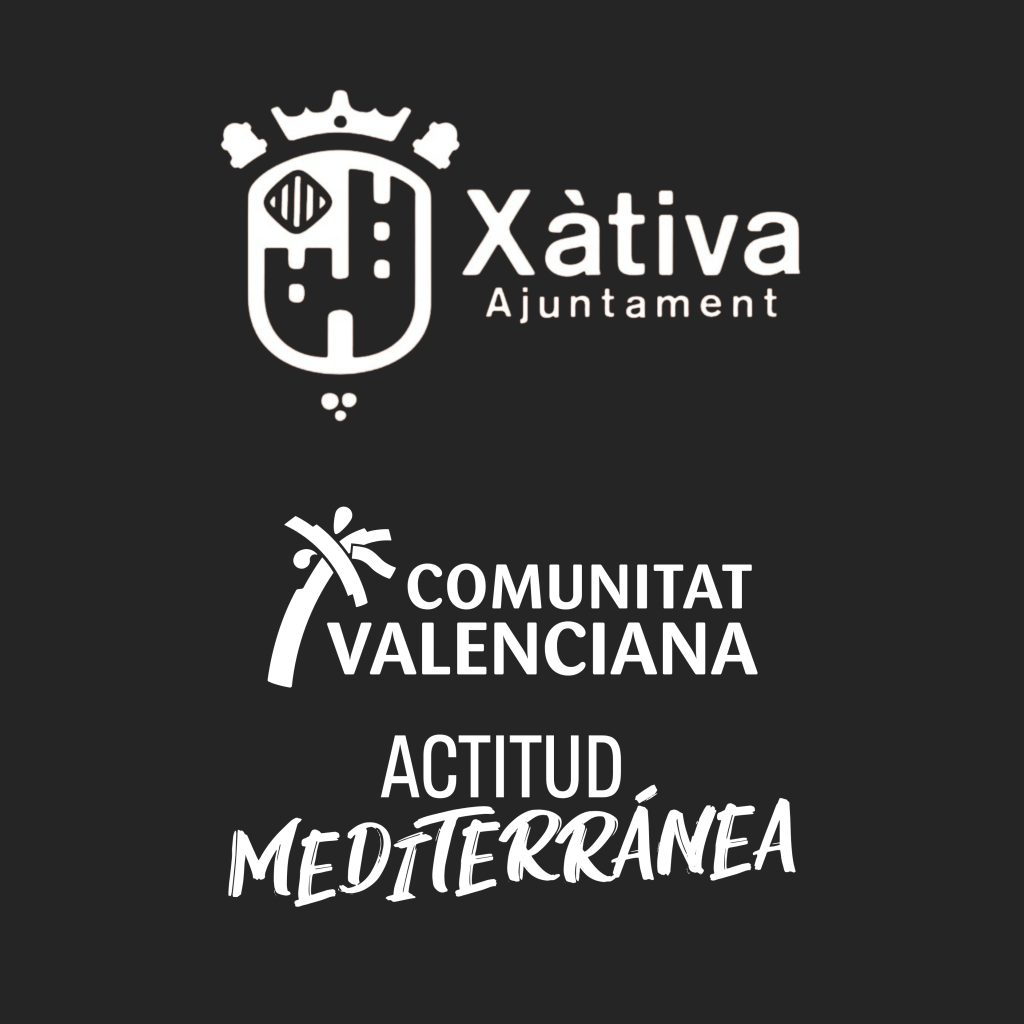THE MUSEUM OF FINE ARTS
An exceptional collection finds its home
THE MUSEUM OF FINE ARTS
An exceptional collection
La Casa de l’ Ensenyança school
The building has been refurbished to house the new Museum of Fine Arts, which holds one of the most important public collections of pictorial art in the Region of Valencia, with works by Ribera, Goya, Vicente López, Santiago Rusiñol, Benlliure, Antoni Miró and many others. It also exhibits outstanding pieces of sculpture and stonemasonry. Of particular note is the iconic portrait of Felipe V, hung upside down in revenge for his having ordered the burning of Xàtiva in 1707. In addition to its permanent collection, this dynamic Museum also regularly holds temporary exhibitions.
La Casa de l’ Ensenyança school
The building has been refurbished to house the new Museum of Fine Arts, which holds one of the most important public collections of pictorial art in the Region of Valencia, with works by Ribera, Goya, Vicente López, Santiago Rusiñol, Benlliure, Antoni Miró and many others. It also exhibits outstanding pieces of sculpture and stonemasonry. Of particular note is the iconic portrait of Felipe V, hung upside down in revenge for his having ordered the burning of Xàtiva in 1707. In addition to its permanent collection, this dynamic Museum also regularly holds temporary exhibitions.
A UNIQUE BUILDING
A UNIQUE BUILDING
JOSEP DE RIBERA, LO SPAGNOLETTO
Born in Xàtiva, Josep de Ribera spent most of his career as a painter and engraver in Italy, mainly in Naples, and was an influential Baroque artist who now occupies a place of honour in the museum. His San Matías Apóstol, a small gem from the Prado Museum, or his San Andrés and El Salvador, are splendid examples of Tenebrism, a dramatic style of painting that created vibrant images of religious passion in the service of the Catholic Counter-Reformation.
THE CHAPEL OF THE BORGIAS
The chapel that Pope Callixtus III ordered to be built in what had been the city’s main mosque before being adapted to Christian worship, endowed Xàtiva with a notable flamboyant Gothic heritage. However, centuries later, the chapel was demolished. The only surviving vestiges of its past existence are the beautiful remains preserved in the museum, including the vault keystone and the angel corbel that supported this prominent family’s coat of arms.
GOYA: CAPRICHOS AND DISPARATES
The Carreño Gómez collection has endowed the museum with one of its greatest treasures, the complete series of Francisco de Goya’s Caprichos and Disparates engravings. The Caprichos, considered key in the work of Goya and in modern art, furnishes an irreplaceable insight into a turbulent time. Meanwhile, in the enigmatic Disparates, also known as the Proverbios, the visionary Aragonese artist combines allegorical criticism with aesthetic pessimism, coinciding with Spain’s return to absolutism.
JOSEP DE RIBERA, LO SPAGNOLETTO
Born in Xàtiva, Josep de Ribera spent most of his career as a painter and engraver in Italy, mainly in Naples, and was an influential Baroque artist who now occupies a place of honour in the museum. His San Matías Apóstol, a small gem from the Prado Museum, or his San Andrés and El Salvador, are splendid examples of Tenebrism, a dramatic style of painting that created vibrant images of religious passion in the service of the Catholic Counter-Reformation.
THE CHAPEL OF THE BORGIAS
The chapel that Pope Callixtus III ordered to be built in what had been the city’s main mosque before being adapted to Christian worship, endowed Xàtiva with a notable flamboyant Gothic heritage. However, centuries later, the chapel was demolished. The only surviving vestiges of its past existence are the beautiful remains preserved in the museum, including the vault keystone and the angel corbel that supported this prominent family’s coat of arms.
GOYA: CAPRICHOS AND DISPARATES
The Carreño Gómez collection has endowed the museum with one of its greatest treasures, the complete series of Francisco de Goya’s Caprichos and Disparates engravings. The Caprichos, considered key in the work of Goya and in modern art, furnishes an irreplaceable insight into a turbulent time. Meanwhile, in the enigmatic Disparates, also known as the Proverbios, the visionary Aragonese artist combines allegorical criticism with aesthetic pessimism, coinciding with Spain’s return to absolutism.

SYMBOL OF THE CITY
The portrait of Felipe V is hung upside down to avenge the three times he ordered the city to be burnt and razed to the ground
SYMBOL OF THE CITY
The portrait of Felipe V is hung upside down to avenge the three times he ordered the city to be burnt and razed to the ground
The collections
Thanks to the restoration of the Casa de l’ Ensenyança, Xàtiva’s magnificent pictorial collection can now be displayed in superb conditions. The collection ranges from pieces in the 16th century Gothic style to contemporary works of art. There is an outstanding collection of Baroque art, with paintings by Josep de Ribera as well as several works by his contemporaries, on loan from the Prado Museum in recognition of the artist’s special relationship with the city of Xàtiva. Works by great masters such as Luca Giordano, Carducho, Palomino and Juan Bautista Mazo, as well as others from the workshop or school of Teniers, Breughel, Rembrandt, Murillo and Velázquez, speak for themselves and need no introduction here. The museum also houses notable portraits of monarchs which once hung in the City Hall, including one of Fernando VII by Vicente López, who also painted an exceptional Santa Cena (Last Supper). Other artists represented in the collection include Benlliure, Rusiñol, Pérez Contel, contemporary artists such as Vento and Hernández Quero, and the Valencian painters Manuel Boix, Artur Heras, Enric Solbes, Antoni Miró and Adrià Pina. There is also a magnificent collection of engravings, among which the complete series of Goya’s Caprichos and Disparates must take pride of place.
THE TRAVELLER’S CROSS
The museum preserves a magnificent example of a boundary cross, carved in limestone in the late Gothic style. It once stood at the entrance to the city, on the road to Valencia, and is an extraordinarily intricate piece of work that must have required the labours of the most skilled stonemasons.
MYSTERIOUS MASTER OF BORBOTÓ
The Retablo del Salvador altarpiece, also known as the Transfiguración, consists of 22 panels attributed to the Master of Borbotó. The identity of this prolific 16th century Valencian artist remains a mystery even today. Some scholars claim that the Master of Borbotó, the Master of Xàtiva and the Master of Artes, to whom numerous works have been attributed, sometimes in conjunction, were in fact the same person, and that the different names indicated the Master’s stylistic evolution from the Gothic to the Renaissance.
THE TRAVELLER’S CROSS
The museum preserves a magnificent example of a boundary cross, carved in limestone in the late Gothic style. It once stood at the entrance to the city, on the road to Valencia, and is an extraordinarily intricate piece of work that must have required the labours of the most skilled stonemasons.
MYSTERIOUS MASTER OF BORBOTÓ
The Retablo del Salvador altarpiece, also known as the Transfiguración, consists of 22 panels attributed to the Master of Borbotó. The identity of this prolific 16th century Valencian artist remains a mystery even today. Some scholars claim that the Master of Borbotó, the Master of Xàtiva and the Master of Artes, to whom numerous works have been attributed, sometimes in conjunction, were in fact the same person, and that the different names indicated the Master’s stylistic evolution from the Gothic to the Renaissance.

REJA DE SANTA CLARA GRILLE
The cloister and its inner world.
Royal Monastery of Santa Clara, 14th century
REJA DE SANTA CLARA GRILLE
The cloister and its inner world.
Royal Monastery of Santa Clara, 14th century
JOSÉ BENLLIURE
The Valencian painter José Benlliure, whose life straddled the 19th and 20th centuries, is also well represented. In his unique style, Benlliure cultivated Costumbrist painting, and today his work bears witness to a bygone era.
NICOLAU FALCÓ
Sant Nicolau i Sant Dionís, by the Valencian painter Nicolau Falcó, is the sole and final panel that has been preserved of the altarpiece from the Ermita de las Santes chapel in Xàtiva. Falcó, whose work reflects the late Gothic and incipient Renaissance styles, was the forerunner of an important group of painters in 16th century Valencia.
VICENTE LÓPEZ
La Santa Cena, by the painter Vicente López, is an exceptional work of Valencian art. López was a prominent representative of Spanish neo-Classicism and court painter for Fernando VII and Isabella II. His other work displayed here is a portrait of Fernando VII. Although a contemporary of Francisco de Goya, his work was in complete contrast as it reflects cold academic virtuosity.
JOSÉ BENLLIURE
The Valencian painter José Benlliure, whose life straddled the 19th and 20th centuries, is also well represented. In his unique style, Benlliure cultivated Costumbrist painting, and today his work bears witness to a bygone era.
NICOLAU FALCÓ
Sant Nicolau i Sant Dionís, by the Valencian painter Nicolau Falcó, is the sole and final panel that has been preserved of the altarpiece from the Ermita de las Santes chapel in Xàtiva. Falcó, whose work reflects the late Gothic and incipient Renaissance styles, was the forerunner of an important group of painters in 16th century Valencia.
VICENTE LÓPEZ
La Santa Cena, by the painter Vicente López, is an exceptional work of Valencian art. López was a prominent representative of Spanish neo-Classicism and court painter for Fernando VII and Isabella II. His other work displayed here is a portrait of Fernando VII. Although a contemporary of Francisco de Goya, his work was in complete contrast as it reflects cold academic virtuosity.
Information
CASA DE L’ENSENYANÇA
MUSEO DE BELLAS ARTES XÀTIVA
No. 2, Plaza Arzobispo Mayoral
Telephone: 962 28 24 55
From June 11 to September 8:
From Tuesday to Sunday, from 10:00 a.m. to 2:30 p.m.
Closed Monday
Tickets
Information
CASA DE L’ENSENYANÇA
MUSEO DE BELLAS ARTES XÀTIVA
No. 2, Plaza Arzobispo Mayoral
Telephone: 962 28 24 55
From June 11 to September 8:
From Tuesday to Sunday, from 10:00 a.m. to 2:30 p.m.
Closed Monday



